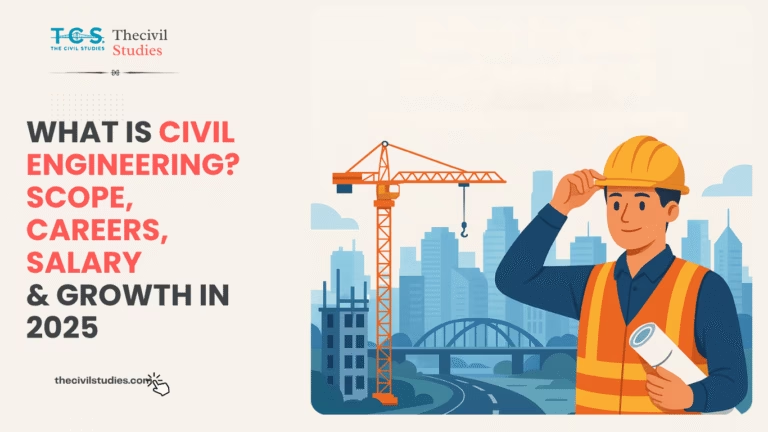Imagine living in a city where traffic jams are history, streetlights automatically adjust to save energy, waste is collected without manual intervention, and you can track buses in real-time from your phone. Sounds futuristic? This is exactly what India’s Smart Cities Mission is making a reality.
Launched on 25 June 2015 by Prime Minister Narendra Modi, the Smart Cities Mission isn’t just about modern buildings or flashy tech—it’s about reimagining how cities work for people. With a focus on sustainability, inclusivity, and technology-driven growth, the mission is transforming 100 Indian cities into replicable urban models for the future.
Why Do We Need Smart Cities in India?
India is urbanizing at breakneck speed—by 2030, nearly 600 million people are expected to live in cities. But rapid urban growth brings major challenges:
- Traffic congestion & poor mobility
- Air and water pollution
- Strained housing and infrastructure
- Public safety concerns
- Inefficient waste and water management
The Smart Cities Mission directly addresses these pain points with innovative solutions—making cities safer, greener, more inclusive, and more efficient.


What is Air Pollution: Causes, Effects, and Solutions
Water Pollution: How We’re Poisoning Our Own Lifeline
what are the effective Strategies for Controlling Air Pollution in India?
Why India’s focus on controlling air pollution is misguided
How the Mission Works: Two Approaches That Shape Smarter Cities
Unlike traditional city development programs, the Smart Cities Mission follows a two-pronged approach:
- Area-Based Development (ABD):
Cities identify smaller zones for retrofitting, redevelopment, or greenfield projects. These areas become innovation labs—testing smart solutions before scaling them citywide. - Pan-City Initiatives:
Beyond specific zones, cities deploy technology-driven projects like intelligent traffic systems, smart metering, e-governance platforms, and digital health services across the entire city.
This dual strategy ensures that transformation is both localized and scalable, benefitting every resident.
Key Achievements of the Smart Cities Mission
In less than a decade, the mission has made impressive progress:
- 8,000+ projects worth over ₹1.6 lakh crore planned.
- 90% projects completed, including smart roads, housing, and green energy.
- 17 cities have achieved 100% project completion.
- ₹46,787 crore of central funding already released, with over 90% utilized.
These numbers highlight not just ambition—but also real execution on the ground.

Transformational Projects Driving Change
Here’s what’s changing daily life in smart cities:
- Integrated Command & Control Centres (ICCCs): The nerve centers of smart cities—monitoring traffic, water supply, and even acting as COVID-19 war rooms.
- Smarter Mobility: 4,700 km of smart roads, cycle tracks, and intelligent traffic systems are cutting commute times and reducing accidents.
- Energy Efficiency: 52 lakh LED/solar streetlights installed + 86,000 km of underground electricity cabling.
- Waste Management: RFID-enabled garbage trucks and digital tracking improving collection efficiency in 50+ cities.
- Water Supply: 10,000 km of pipelines monitored with SCADA systems, reducing leakages.
- Affordable Housing: Nearly 50,000 homes built for low-income families.
- Green & Public Spaces: 1,300+ parks, lakes, and promenades developed.
- Smart Education & Healthcare: 7,600+ smart classrooms, 172 e-health centers, and digital libraries for accessible learning and care.
- Economic Hubs: 21 incubation centers and 56 redeveloped markets driving entrepreneurship and jobs.
More Than Just Infrastructure: Citizen-Centric Innovations
The mission has gone beyond construction to encourage lifestyle changes and community engagement. Some flagship campaigns include:
- 🚴 Cycles4Change – promoting cycling culture.
- 🚶 Streets4People – making cities pedestrian-friendly.
- 👶 Nurturing Neighbourhoods Challenge – designing safe spaces for children and caregivers.
- 🚌 Transport4All – supporting startups in public transport.
- 🍲 EatSmartCities – promoting hygiene and nutrition.
These initiatives prove that the mission isn’t just about buildings and roads—it’s about people-first development.
Challenges and the Road Ahead
Not all projects have been smooth. Land acquisition issues, clearance delays, vendor shortages, and geographical challenges have slowed down about 10% of projects. Recognizing this, the government extended the mission’s timeline to 31 March 2025.
Moving forward, the focus is on:
- Retrofitting existing areas for higher efficiency.
- Redevelopment of old layouts into mixed-use, high-density spaces.
- Greenfield development of entirely new urban hubs like GIFT City, Gujarat.
- Scaling Pan-City solutions—from smart transport to renewable energy.
Why the Smart Cities Mission Matters
The Smart Cities Mission isn’t just about urban convenience—it’s about India’s global competitiveness. By building cities that are:
- Technologically advanced
- Economically vibrant
- Socially inclusive
- Environmentally sustainable
India is laying the foundation for future-ready urban living that can inspire developing nations worldwide.
Conclusion
The Smart Cities Mission is one of the most ambitious urban transformation programs globally. With projects nearing completion, India is witnessing cities evolve into spaces that are smarter, safer, greener, and more livable.
For citizens, this means cleaner streets, efficient transport, safer neighborhoods, better healthcare, and vibrant public spaces. For India, it means a future where cities are engines of economic growth, sustainability, and innovation.
The journey isn’t over, but the progress so far shows that the smart city dream is turning into a reality—one project at a time. click here to know in detailed





